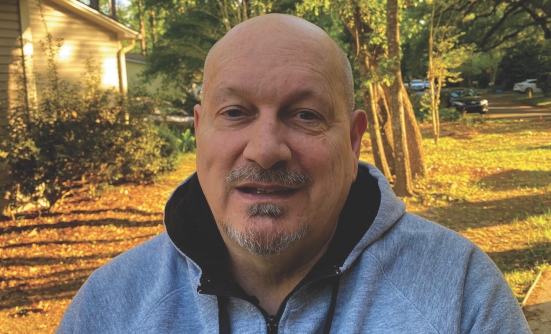
I don’t worry about the impact of climate change on hurricanes. I worry about the impact of climate change on skin cancer.
I can move away from a hurricane. I can’t move away from my nose.
Checking the Boxes
The most likely cause of the basal-cell cancer growth near my nose and a large squamous-cell area on the scalp was exposure to ultraviolet rays. In my younger years, especially, I spent too much time in the sun. I also check most of the other at-risk-for-skin-cancer boxes:
- Older age? Check
- Male gender? Check
- Moles? Too many
- Less skin pigment, less skin protection against ultraviolet light? I’m Irish, fair-skinned (and no hair on top)
- Family history? Father
- Location? Sunny Florida
The World Health Organization (WHO) reminds us of another important factor among the causes of skin cancer.
The WHO and its partner organizations predict that a 10% decrease in stratospheric ozone could cause an additional 300,000 non-melanoma cancers and 4,500 melanoma skin cancers annually worldwide.1,2
I’m hoping that the WHO is wrong.
Michael Ford, MD, my Tallahassee dermatologist surgeon, is a good guy, but I’m hoping that I won’t be seeing much of him in the next 30 years. Dr. Ford recently used the Mohs micrographic procedure to remove the cancerous tissue around my nose.
Mohs Procedure for Basal-Cell Carcinoma
With the Mohs procedure, each individual layer of the tissue was examined under a microscope, 1 layer at a time, until Dr. Ford confirmed that all the cancerous layers were gone. He spared as much of the healthy tissue as possible, while ensuring the elimination of cancerous roots that can spread in blood vessels, nerves, and cartilage.
Dr. Ford also used the Mohs procedure to remove the squamous-cell spot on my scalp, after the area was first treated with topical medication (fluorouracil) for 6 weeks, to shrink the cancerous tissue.
The Mohs procedure, a technique named after the Wisconsin surgeon Dr. Frederic Mohs, is considered the treatment of choice for most head and neck skin cancers, because it offers a high cure rate.3 In 1987, then-President Ronald Reagan opted for the Mohs method after having a recurrence of skin cancer on his nose.4
The American Cancer Society predicts that 1 in 5 persons will have skin cancer in their lifetime.5 I’m lucky. Basal-cell carcinoma and squamous-cell carcinoma are the most common types of skin cancer, and the most treatable.
I dodged melanoma, a more serious skin cancer, which the American Cancer Society estimated to be the cause of 7,230 deaths in 2019, including an estimated 4,740 men and 2,490 women.5
Environmental Regulations
With the rolling back of environmental regulations in recent years—limiting methane emissions from natural gas sites in public lands, for instance—the risks associated with skin cancer are believed to be rising. According to the U.S. Environmental Protection Agency, methane gas is more destructive than carbon dioxide in trapping the earth’s heat.6
In recent years, many of our government officials were listening to the wrong people.
In 1987, President Reagan, listening to the experts, and perhaps leaning on his own personal experience, overruled dissenting Cabinet members in promoting U.S. goals for the Montreal Protocol, an environmental treaty requiring ozone-depleting chemicals to be phased out.7
Cost–Benefit Analysis
In 2012, Cass Sunstein, Harvard Law Professor and former Administrator of the White House Office of Information and Regulatory Affairs, wrote a New York Times opinion column titled “Climate Change: Lessons from Ronald Reagan.” He wrote:
“How did Ronald Reagan, of all people, come to favor aggressive regulatory steps and lead the world toward a strong and historic international agreement? A large part of the answer lies in a tool disliked by many progressives but embraced by Reagan (and Mr. Obama): cost–benefit analysis. Reagan’s economists found that the costs of phasing out ozone-depleting chemicals were a lot lower than the costs of not doing so—largely measured in terms of avoiding cancers that would otherwise occur.”8
With climate change again being recognized as a priority issue by the current political administration—34 years after President Reagan’s skin cancer recurrence on his nose—business may finally be slowing down for Dr. Ford and his dermatologist colleagues.
References
- World Health Organization. Global Solar UV Index Practical Guide. 2002. www.who.int/uv/publications/en/UVIGuide.pdf.
- Abreu D, Gentzler D, Fantis P. Changing climate may contribute to increase in skin cancer. NBC4 Washington. Updated April 26, 2019. www.nbcwashington.com/news/local/Changing-Climate-Skin-Cancer-508821661.html.
- Wikipedia. Frederic E. Mohs. https://en.wikipedia.org/wiki/Frederic_E._Mohs.
- Gerstenzang J. Reagan will face surgery today for cancer on nose. Los Angeles Times. July 31, 1987. www.latimes.com/archives/la-xpm-1987-07-31-mn-216-story.html.
- American Academy of Dermatology. Skin cancer: incidence rates. www.aad.org/media/stats/conditions/skin-cancer.
- Ahmed A. The Environmental Protection Agency wants to repeal its methane emissions limits. Texas Observer. August 30, 2019. www.texasobserver.org/the-environmental-protection-agency-wants-to-repeal-its-methane-emissions-limits/.
- National Security Archive Electronic. Wampler RA, ed. U.S. climate change policy in the 1980s. December 2, 2015. https://nsarchive2.gwu.edu/NSAEBB/NSAEBB536-Reagan-Bush-Recognized-Need-for-US-Leadership-on-Climate-Change-in-1980s/.
- Sunstein CR. Climate change: lessons from Ronald Reagan. New York Times. November 10, 2012. www.nytimes.com/2012/11/11/opinion/sunday/climate-change-lessons-from-ronald-reagan.html.















